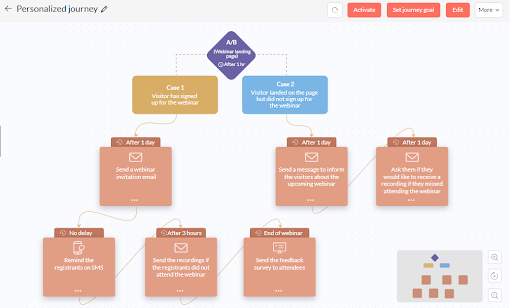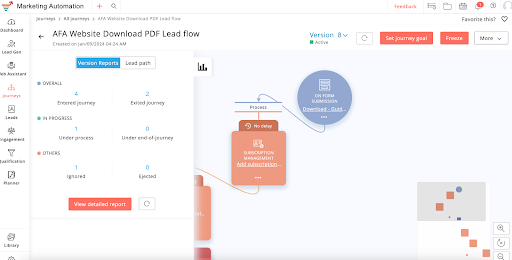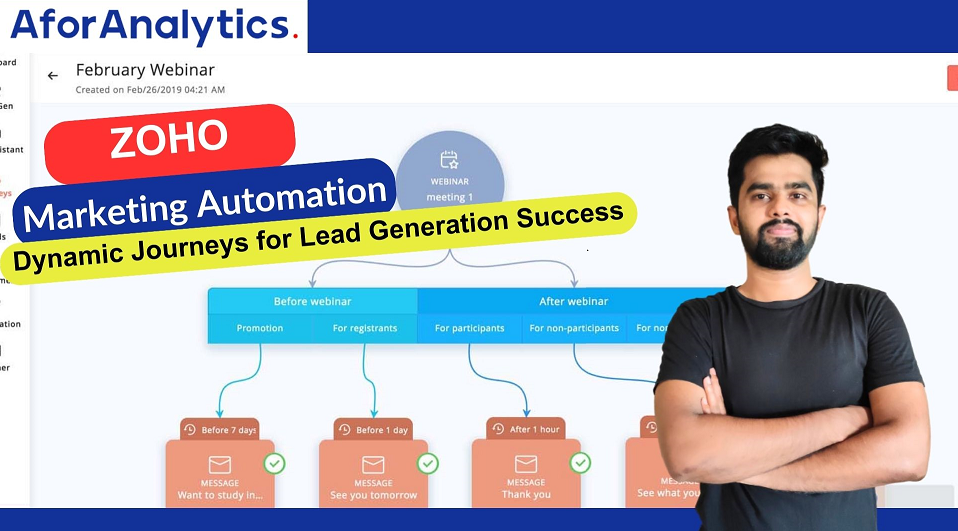Nobody wants to deal with manual digital tasks anymore; everyone is switching to automation. Zoho Marketing Automation (MA) emerges as a game-changer, empowering businesses to expedite lead generation processes with precision and efficiency. Journeys seamlessly guide leads through their conversion path, maximizing engagement and tracking progress every step of the way.
What is a Journey?
In Marketing automation, a journey represents the structured path that leads take from initial interaction to eventual conversion. It’s the meticulously crafted roadmap that guides prospects through a series of touchpoints, engaging them at every step of their buying journey. A journey in Zoho Marketing Automation is more than just a sequence of actions; it’s a dynamic process that adapts to the behavior and preferences of each lead, maximizing the chances of successful conversion. Let’s delve deeper into the essence of a journey and how it forms the backbone of effective lead nurturing strategies.
1. Trigger
A trigger is like a starting point that kicks off the journey. It’s what happens to make everything else start working. For example, when someone fills out a form on your website to request more information, that’s a trigger. It’s the action that sets the journey in motion.
Example: Let’s say you have a website where people can sign up for a free trial of your product. When someone fills out the sign-up form, that triggers the start of the journey in your Zoho Marketing Automation system.
2. Process
The process is what happens after the trigger. It’s all the steps and actions that lead takes along the way. This could include sending emails, making phone calls, or updating information in your customer database. Each step is carefully planned to move the lead closer to becoming a customer.
Example: After someone signs up for a free trial on your website, the process could involve sending them a series of emails with helpful tips and information about your product. You might also set up reminders to follow up with them after a certain amount of time to see if they have any questions or need assistance.
3. End of Journey Actions
End of journey actions are what happens when the journey is complete. This could include things like moving the lead to a different journey, updating their status in your CRM system, or assigning them a score based on their engagement. These actions help ensure that no leads fall through the cracks and that everything is properly tracked and recorded.
Example: Once the free trial period is over and the lead has either become a paying customer or decided not to continue with the product, the end of journey actions might involve updating their status in your CRM system to reflect their decision and possibly assigning them a score based on their level of engagement during the trial period.

Empowering Possibilities
Beyond the journey creation lies the realm of feasibility and adaptability, where Zoho MA truly shines. Marketers can seamlessly transition journeys from draft to publication, ensuring thorough testing and validation before unleashing them into the digital realm. With the ability to modify journeys on-the-fly and track versions effortlessly, Zoho MA empowers marketers to iterate and optimize their strategies with unparalleled agility.

Conclusion
In a nutshell, Zoho MA emerges as a beacon of innovation in the realm of marketing automation, offering a comprehensive suite of tools to elevate your marketing endeavors to new heights. By harnessing the power of Zoho’s integrated platform, marketers can streamline campaign management, foster deeper customer relationships, leverage social media dynamics, and optimize marketing budgets effectively. As a Zoho Consultant, A for Analytics becomes the cornerstone of strategic decision-making, unlocking new realms of efficiency and effectiveness in your marketing endeavors.

